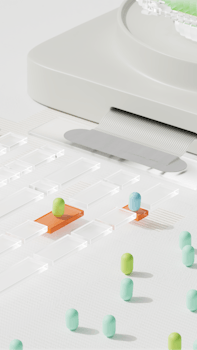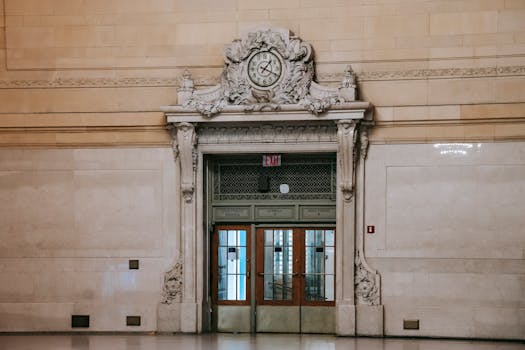
How Everyone is Impacted by AI
Introduction to AI
Artificial Intelligence (AI) is changing our world in ways we never imagined possible. From how we shop online to how we communicate with each other, AI is becoming a big part of our daily lives. This blog will explore how AI impacts everyone, including teenagers, students, workers, and families.
What is AI?
AI refers to the ability of a machine to perform tasks that usually require human intelligence. This includes tasks like understanding language, recognizing patterns, solving problems, and learning from experience. Some popular examples of AI are chatbots, voice assistants like Siri and Alexa, and recommendation systems used by Netflix and Spotify.
How Does AI Impact Our Daily Lives?
1. Personal Assistants
Many of us have personal assistants on our smartphones. Siri, Google Assistant, and Alexa help us find information, set reminders, and control smart home devices. They use AI to understand our voice commands and respond appropriately. This makes our lives easier and more convenient.
2. Social Media
Social media platforms like Facebook, Instagram, and TikTok use AI to analyze our behavior. They show us content that we're likely to enjoy based on our previous interactions. This means that AI is influencing what we see and how we connect with others online.
3. Shopping
Ever notice how websites recommend products you might like? That's AI at work! E-commerce platforms use AI algorithms to suggest items based on your shopping history and preferences, making online shopping more personalized. This can help save time and lead to a better shopping experience.
4. Entertainment
AI is also transforming the entertainment industry. Streaming services like Netflix use AI to analyze what shows and movies you watch, helping them recommend new content tailored just for you. This means you can find shows you love without spending hours searching!
AI in Education
AI is making waves in education as well. Learning platforms like Khan Academy and Duolingo use AI to tailor lessons to students' individual learning paces. This means teenagers can learn more effectively, as they receive support based on their unique skills.
1. Personalized Learning
With AI, tutors can provide personalized feedback to students, focusing on areas where they need the most help. This one-on-one support can improve learning outcomes and encourage students to keep trying even when they face challenges.
2. AI Tutors
Some programs use AI to simulate a tutor. These AI tutors can answer questions and provide explanations on various subjects, giving students additional help outside the classroom.
AI in Healthcare
AI is revolutionizing healthcare by improving diagnostics and patient care. Doctors use AI systems to analyze medical images, predict patient outcomes, and even suggest treatment plans.
1. Better Diagnosis
AI algorithms can analyze medical data much faster than humans. This helps doctors identify diseases earlier and more accurately, resulting in better patient care.
2. Personalized Medicine
AI can help create personalized treatment plans by analyzing data from numerous patients. This allows healthcare professionals to choose the best options for each individual based on their unique circumstances.
AI and the Job Market
AI is reshaping the job market in many ways. While it creates opportunities, it also poses challenges for workers. Understanding these changes is crucial for everyone, especially teenagers entering the workforce.
1. Job Creation
AI is leading to the creation of new jobs in various fields, such as data analysis, AI development, and machine learning. Knowing how to work alongside AI tools can increase job prospects for young people.
2. Job Displacement
Some jobs may become obsolete due to AI automation. This includes repetitive tasks in manufacturing and administrative work. It's essential for those entering the job market to adapt by gaining new, in-demand skills.
Challenges of AI
While AI has many benefits, it also brings challenges that everyone should be aware of.
1. Privacy Concerns
AI systems often require access to personal data to function efficiently. This creates privacy concerns, as people may feel their information is being misused or inadequately protected.
2. Bias and Inequality
AI algorithms can sometimes reflect biases present in the data they are trained on. This can lead to unfair outcomes in areas like hiring and law enforcement. It is important to address these issues to ensure AI benefits everyone equally.
3. Dependency on Technology
As we rely more on AI tools, there's a risk of becoming too dependent on technology. This can impact critical thinking skills and problem-solving abilities, especially among young people.
The Future of AI
The future of AI is exciting and full of possibilities. As technology continues to evolve, we can expect even more advancements that will change our lives for the better.
1. AI and Climate Change
AI can help address climate challenges by analyzing environmental data and creating solutions to reduce carbon footprints. This technology can aid in developing more sustainable practices in various industries.
2. Enhancing Human Capabilities
AI can augment our capabilities in many fields, allowing humans to focus on the most creative and complex tasks. This collaboration between humans and machines could lead to significant advances in innovation.
Conclusion
Artificial Intelligence is impacting every aspect of our lives, from education and work to healthcare and personal entertainment. While it brings numerous benefits, it also poses challenges that we must address collectively. By understanding how AI affects us, we can better prepare for the future and harness its potential for positive change.
As teenagers and future leaders, it's essential to stay informed about AI and develop skills that complement this technology. Embracing AI while understanding its implications will help create a better society for everyone.

